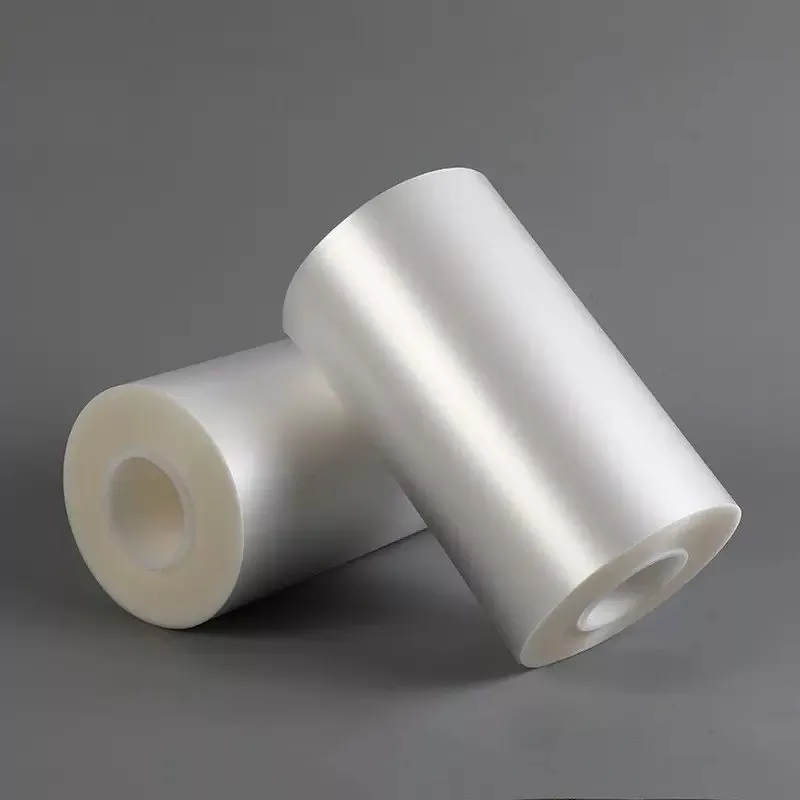
- English
- Español
- Português
- русский
- Français
- 日本語
- Deutsch
- tiếng Việt
- Italiano
- Nederlands
- ภาษาไทย
- Polski
- 한국어
- Svenska
- magyar
- Malay
- বাংলা ভাষার
- Dansk
- Suomi
- हिन्दी
- Pilipino
- Türkçe
- Gaeilge
- العربية
- Indonesia
- Norsk
- تمل
- český
- ελληνικά
- український
- Javanese
- فارسی
- தமிழ்
- తెలుగు
- नेपाली
- Burmese
- български
- ລາວ
- Latine
- Қазақша
- Euskal
- Azərbaycan
- Slovenský jazyk
- Македонски
- Lietuvos
- Eesti Keel
- Română
- Slovenski
- मराठी
- Srpski језик
Characteristics of medium temperature cooking CPP (RCPP) and high temperature cooking CPP (SCPP)
2024-01-03
The main characteristics of the retort grade CPP film are: good flatness; high tensile strength; high heat sealing strength; high heat sealing temperature (required to ensure high heat sealing strength under high temperature and pressure during cooking); high impact strength (required The ability to resist puncture and bag breakage under high temperature and pressure during cooking); moderate elongation at break; good medium resistance, etc. The main raw material of retort grade CPP film is block copolymer impact-resistant polypropylene.
Its performance requirements are: Vicat softening point temperature should be greater than the cooking temperature; haze should be as small as possible (because the haze of block copolymerization is relatively large); impact resistance should be good; medium resistance should be good; fish eyes and crystal points should be as much as possible And less. Block copolymer impact-resistant polypropylene is difficult to produce and market development is difficult, so there are very few domestic products and basically all raw materials are imported. Due to the relatively high technical requirements and cost of film-grade block copolymer impact-resistant polypropylene raw materials, some domestic manufacturers are trying to use high heat-sealing temperature two-component heat-sealable polypropylene materials and injection molding-grade block copolymer impact-resistant polypropylene materials instead. Film-grade block copolymer impact-resistant polypropylene raw material. When using two-component heat-sealing polypropylene material with a high heat-sealing temperature, there is no problem with the heat-sealing temperature and heat strength, the haze is also very good, and there are few fish eyes and crystal points, but the tensile strength, impact resistance, and medium resistance are Performance indicators such as toughness and elongation at break may be slightly worse. When using injection molding grade block copolymer impact-resistant polypropylene material, the impact resistance, medium resistance and other indicators are acceptable, but there are many fish eyes and crystal points, and the tensile strength, elongation at break, haze and other performance indicators may be required. Not even close.
The first is the selection of the ink binder (to ensure the stability of the binder under high-temperature cooking temperatures); the second is the selection of ink colorants (to ensure the color stability of the colorant under high-temperature cooking temperatures); the third is the ink Selection of curing agent (pay attention to the selection of curing agent when using two-component ink).
Pay attention to the difference: ordinary retort-resistant ink; high-temperature retort-resistant ink; ultra-high-temperature retort-resistant ink. Also pay attention to the problem of ink color transfer, the problem of adding new curing agent when two-component residual ink is mixed with new ink, the problem of reduced scratch resistance when curing agent is excessive, etc.
High-temperature-resistant retort bags need to undergo high-temperature cooking and sterilization. High-temperature-resistant 121cc and ultra-high-temperature 135cc retort-resistant adhesives should be used. Ordinary adhesives must not be used. Ordinary adhesives are not temperature-resistant. Composite film bags usually delaminate and peel off below 80L°C. Very low intensity. The high-temperature retort-resistant adhesive must have good adhesion to treated PET, polyolefin, aluminum foil, aluminum-coated foil, PVDC coating and processed extruded thermal film layer, as well as excellent retortability and resistance to chemical media Aggressive.




